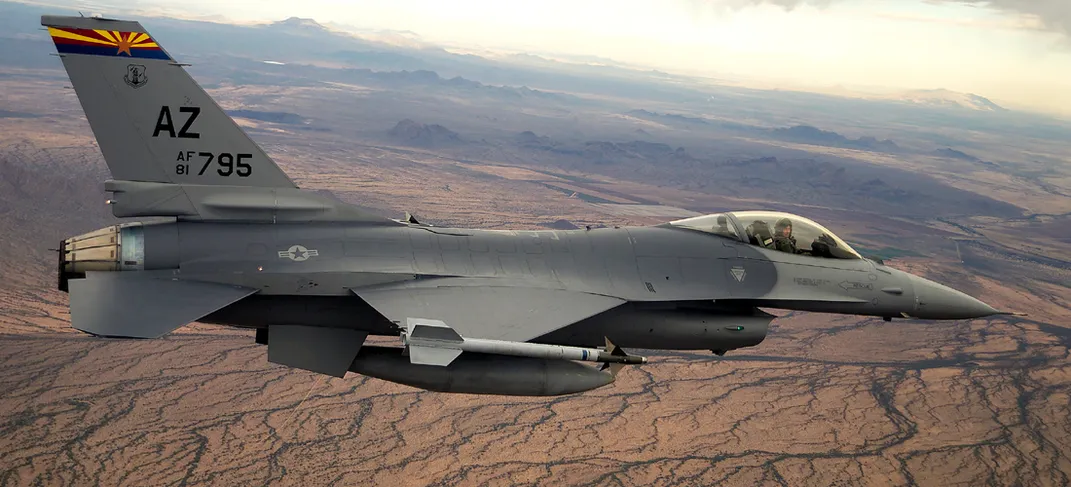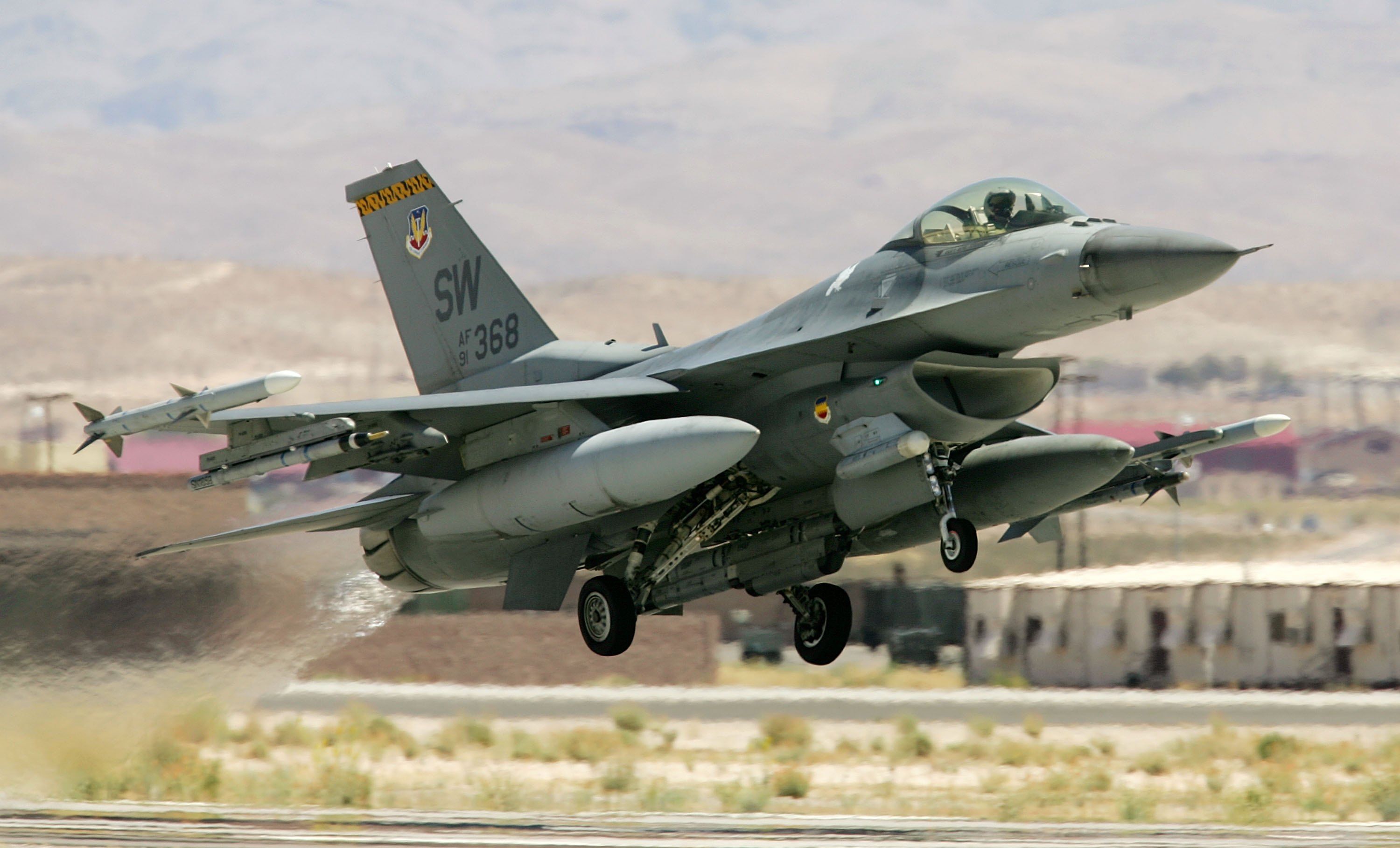The F-16 Falcon: Mastering the Skies as the Ultimate Phenomenon

F-16 Fighter Jet: The Sky’s Ultimate Predator

The F-16 fighting Falcon is widely regarded as one of the most successful and versatile multi-role jet fighters ever produced.
Currently, there are approximately 3,000 F-16s in active service across 25 countries. This is a testament to the aircraft’s enduring popularity and effectiveness.
Despite being introduced in the 1970s, the fourth-generation F-16 is still going strong today and is expected to remain in service for many more years.
Its adaptability and versatility have allowed it to remain relevant in an ever-changing global security landscape, and it continues to play a vital role in many Air Forces’ operations.
Since entering service in 1979, this “warbird” has been battle-tested, engaging in more than 400,000 combat sorties and accumulating a combined 19 million flight hours.
Its exceptional performance and versatility have made it the backbone of Air Force operations worldwide.
One of the key advantages of the F-16 is its speed and agility, making it a formidable fighter in air-to-air combat situations.
But the F-16 isn’t just a top performer in its class; it’s also one of the most cost-effective options available.

F-16’s Unique Features
The single-piece bird-proof polycarbonate canopy provides 360 degrees all-round visibility, with a 40-degree look-down angle over the side of the aircraft and 15 degrees down over the nose.
The pilot’s seat is elevated for this purpose.
Furthermore, the F-16’s canopy lacks the forward bow frame found on many fighters, which is an obstruction to a pilot’s forward vision.
The agile F-16 fighting Falcon is the most numerous jet in military service today and boasts a superb combat record.
However, the 40-year-old single-engine fighter, planned to remain in US Military service through 2048, will need to evolve to keep its edge in a world where Stealth Fighters, Long-Range Missions, and newer 4.5-generation fighters with more powerful sensors are proliferating.
A significant step toward that evolution occurred on January 9th when a facility in Baltimore completed the installation of powerful new APG-83 Scalable Agile Beam Radars to fit inside the noses of 72 National Guard F-16Cs and Ds.
The APG-83 is 85% based on the APG-81 radar installed in brand-new F-35 stealth fighters, but scaled down for affordability and compatibility with the F-16.
A Wide Range of Weapon Capabilities
The latest version of the fighting Falcon is powered by a single engine, either the General Electric F110-ge-129 or the Pratt and Whitney F100-PW-229. Highly agile, the F-16 was the first fighter aircraft purpose-built to pull 9Gs maneuvers and can reach a maximum speed of over Mach 2.
The F-16 fighting Falcon is a highly versatile fighter jet with a wide range of weapon capabilities.
Its numerous hardpoints provide flexibility for a variety of mission requirements, including air-to-air and air-to-surface operations.

For air-to-air engagements, the F-16 can carry a range of missiles including AIM-9 Sidewinder, AIM-120 Amraam, AIM-7 Sparrow, Python, and the AIM-9X Sidewinder.
The AIM-9X is a next-generation missile that provides enhanced capabilities for engaging targets at short range.
For air-to-surface operations, the F-16 can carry AGM-65 Maverick, AGM-88 Harm, AGM-158 Joint Air-to-Surface Standoff Missile, AGM-154 Joint Standoff Weapon, as well as anti-ship missiles such as the AGM-84 Harpoon and AGM-119 Penguin.
Additionally, the F-16 can carry a wide range of bombs, including CBUs, GPBs, GBU-39 Small Diameter Bomb, Paveway, a series of laser-guided bombs, JDAMs, and nuclear bombs.
The F-16 is also equipped with a 20mm General Electric M61A1 multi-barrel cannon, which is mounted on the left side of the fuselage and has a firing rate of approximately 6,000 rounds per minute.
The cannon is used for close-range engagements and is typically used as a last resort when other weapons have been expended or are unavailable.
F-16 Variants
F-16 models are denoted by increasing block numbers to denote upgrades.
The blocks cover both single and two-seat versions.
A variety of software, hardware systems, weapons compatibility, and structural enhancements have been instituted over the years to gradually upgrade production models and retrofit delivered aircraft.
In addition to the block designs, there are several other variants of the F-16 that have undergone significant changes due to modification programs.
Some variants have been specialized for specific roles, such as close air support and reconnaissance.
Furthermore, various models were created to test new technologies.
The F-16A/B is the initial production version of the F-16 Fighting Falcon, which entered service with the US Air Force in 1979.
It is the most numerous of all F-16 variants, with 475 produced.
These fighter jet variants entered production in 1997. The major difference from the earlier blocks is that these are powered by the General Electric F110-ge-129 engine.
This block mainly consists of F-16C (single-seat) and F-16D (two-seat) aircraft, with more advanced avionics and capabilities.
Block 40/42 aircraft are equipped with the improved AN/APG-68 radar, have improved precision night-attack capability, and are equipped to carry the LANTIRN (Low-Altitude Navigation and Targeting Infrared for Night) system.
Block 50/52 aircraft also include structural and avionic improvements.
Block 60 aircraft are a variant developed for the United Arab Emirates and are equipped with the advanced APG-80 AESA radar and other unique features.
Future Prospects and Conclusion
While the F-16 has proven its capabilities over the decades and received numerous upgrades, it’s facing the reality of evolving global threats and the emergence of new technologies.
To remain relevant, the F-16 will likely need to continue undergoing upgrades, integrating new avionics, sensors, and weapons systems.
The installation of the APG-83 radar in some F-16 variants is a step in that direction, providing enhanced situational awareness and targeting capabilities.
However, the F-16’s future role could shift from being a primary frontline fighter to more specialized tasks such as close air support, given the increasing prominence of fifth-generation stealth fighters like the F-35 and the development of sixth-generation platforms.
In conclusion, the F-16 Fighting Falcon has had a remarkable journey since its introduction and continues to be a critical asset for air forces around the world. Its adaptability, versatility, and combat-proven track record have allowed it to stand the test of time. While challenges lie ahead, ongoing upgrades and potential role adjustments could keep the F-16 flying for years to come.
